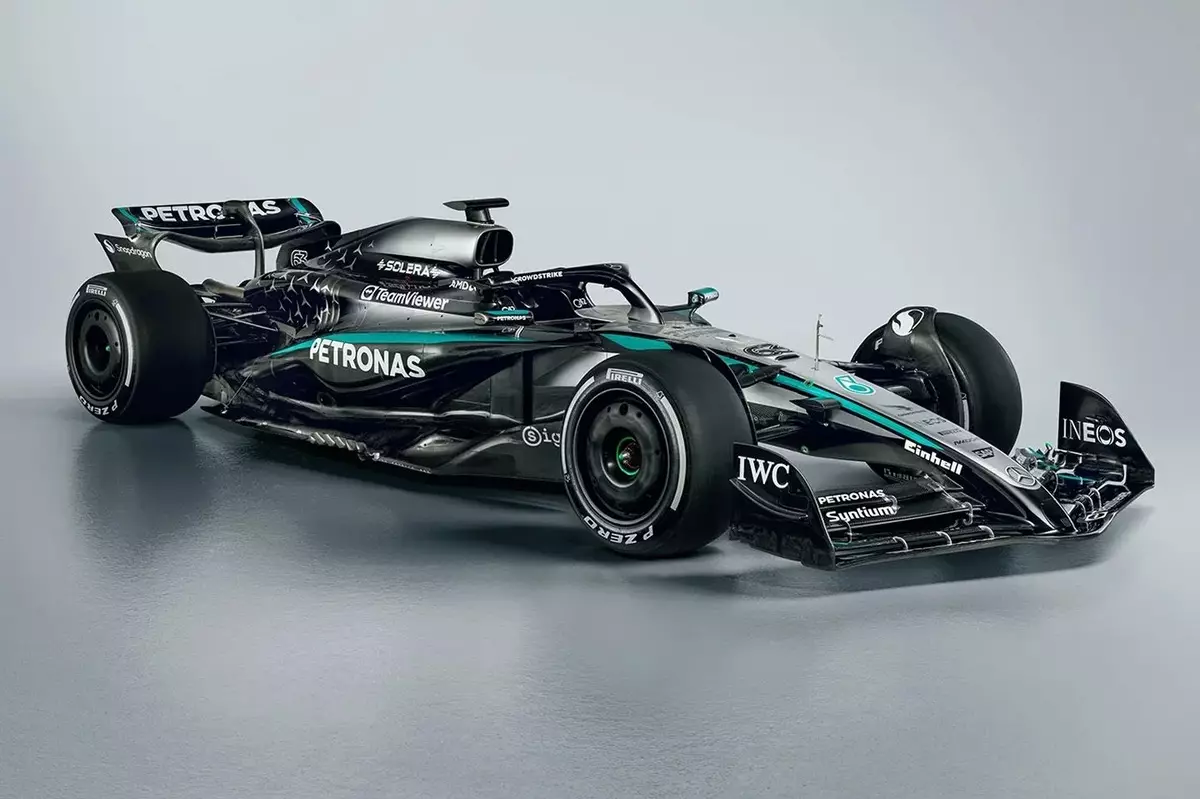The unveiling of the Mercedes Formula 1 team’s 2025 challenger, the W16, marks an important milestone in the team’s ongoing quest for competitiveness in a rapidly evolving racing landscape. After the F175 launch event in London, which showcased the team’s new livery, the anticipation surrounding the technical specifications of the W16 has reached a fever pitch. The car is set to feature significant modifications aimed at addressing the performance inconsistencies faced by its predecessor, the W15, during the previous season.
The 2024 season was a challenging one for Mercedes, underscored by a series of highs and lows. Although drivers George Russell and Lewis Hamilton managed to secure four victories between them, including a stellar one-two finish in Las Vegas, the team’s performance was lackluster in many other races, diminishing their championship aspirations. Ultimately, finishing fourth in the constructors’ standings highlighted the need for significant changes. The W15 struggled to maintain balance and responsiveness—a concern that the team is eager to remedy with the new W16.
Russell’s ascendance to team leader following Hamilton’s move to Ferrari introduces another layer of uncertainty but also opportunity. The decision to promote the young and talented Andrea Kimi Antonelli, who joins the ranks as the youngest driver for the Mercedes team, signifies a commitment to youth and innovation. It will be fascinating to see how Antonelli adapts to the pressures of Formula 1 while learning from a veteran like Russell.
Technical Innovations and Strategies
One of the most ambitious aspects of the W16 is the comprehensive overhaul of its aerodynamic framework. The technical team, led by James Allison, has redesigned every aerodynamic surface and devised a new front suspension to enhance the car’s handling characteristics. The core focus has shifted to resolving issues related to slow corner performance—specifically, the W15’s reluctance to turn effectively, exacerbated by uneven tire temperatures. Such persistent issues have hindered the team’s ability to set up the car optimally for various circuits.
Russell expresses cautious optimism regarding the new approach, emphasizing the necessity of disciplined testing and rigorous simulator work. The team seems intent on avoiding the pitfalls of prior seasons, suggesting a more methodical and thoughtful strategy in tackling the inherent challenges of F1 racing.
As the Mercedes team prepares for a filming day at the Bahrain International Circuit, anticipation builds for the pre-season tests set to occur later this month. These initial outings will provide insights not only into how well the W16 addresses the weaknesses of its predecessor but also into the competitive landscape of Formula 1 for the upcoming year.
The 2025 season holds great promise for Mercedes, but the road ahead will undoubtedly test the resilience and adaptability of both the team and its drivers. With a keen focus on innovation and improved performance, the W16 could potentially reinvigorate the Silver Arrows’ position among the elite teams in Formula 1. The unfolding narrative as the season progresses will be one to watch for fans and competitors alike.

